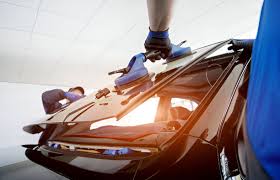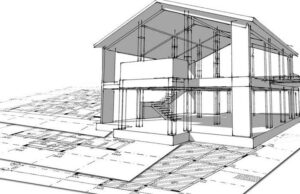
Modern vehicles are equipped with technology that not only improves convenience but also enhances safety. Features like lane departure warning, adaptive cruise control, and automatic emergency braking are now standard in many cars, and they all rely on a system called ADAS—Advanced Driver Assistance Systems. These systems function through a network of sensors, including one or more mounted on the windshield.
When your windshield is replaced, these sensors and cameras must be precisely realigned. That process is known as windshield calibration. If you’re in Minnesota and considering a windshield replacement, understanding windshield calibration services in Twin Cities is essential for maintaining the safety and functionality of your vehicle.
This complete guide for 2025 will walk you through why calibration matters, how it works, the types of services available, and how to choose the right provider.
Why Windshield Calibration Matters More Than Ever
ADAS technology relies heavily on accurate sensor data. The camera that sits near the top center of your windshield plays a critical role in how these systems perceive your surroundings. If it’s even slightly out of position after a windshield replacement, it can compromise your vehicle’s ability to respond to hazards.
An uncalibrated or misaligned sensor can lead to:
-
Delayed collision warnings
-
Improper lane keeping assist
-
Faulty pedestrian detection
-
Ineffective automatic braking
In worst-case scenarios, it can put you and your passengers at risk. That’s why windshield calibration services in Twin Cities are more than just an optional add-on—they’re a safety requirement for modern vehicles.
Types of Windshield Calibration
There are two main types of calibration services used today. The method depends on your vehicle’s make, model, and manufacturer’s guidelines.
Static Calibration
Performed in a controlled shop environment, this process involves placing a series of targets at specific angles and distances in front of the vehicle. It requires a level surface, proper lighting, and advanced diagnostic tools. This method is often required for vehicles that have complex camera systems or limited adaptive learning capabilities.
Dynamic Calibration
Also known as mobile calibration, this process involves driving the vehicle at specific speeds on well-marked roads while a diagnostic tool monitors and adjusts the camera settings. It’s often used for cars that can self-adjust with guidance from the onboard computer.
Some vehicles may require a combination of both static and dynamic calibration to meet safety standards.
What to Expect During the Calibration Process
When you bring your vehicle in for windshield calibration services in Twin Cities, here’s what typically happens:
-
Assessment – The technician determines which type of calibration is required based on your vehicle’s specifications.
-
Windshield Replacement (if needed) – If the service includes replacing the windshield, it must be done before calibration.
-
Calibration Setup – Targets and equipment are positioned for static calibration, or the vehicle is prepped for a dynamic test drive.
-
System Diagnostics – Specialized software is used to communicate with the ADAS to verify the calibration is within OEM specifications.
-
Testing and Verification – After calibration, the technician will test ADAS functions and confirm that all systems are operating correctly.
This entire process can take anywhere from one to three hours, depending on the complexity of the vehicle and the calibration method.
Choosing the Right Provider in the Twin Cities
Not all shops are equipped to handle calibration properly. Choosing the right provider for windshield calibration services in Twin Cities can make the difference between a smooth, safe driving experience and one filled with risk.
Here’s what to look for:
-
Certification – Technicians should be trained and certified in ADAS calibration.
-
OEM Compliance – Make sure the shop follows Original Equipment Manufacturer guidelines.
-
Advanced Equipment – Look for shops with the latest calibration tools and software.
-
Warranty – A reputable provider will stand behind their work with a service warranty.
-
Insurance Support – Many calibration services are covered by insurance. The shop should assist with filing claims.
A professional provider will not only recalibrate your ADAS system but also ensure that your vehicle is safe to drive before returning it to you.
Mobile vs. In-Shop Services
One of the conveniences now available in 2025 is the option for mobile calibration services. This means a technician can come to your location—whether that’s your home or office—and perform dynamic calibration on-site. However, if your car requires static calibration, you’ll need to visit a shop equipped with a proper setup.
Many Twin Cities providers offer both mobile and in-shop options, giving drivers more flexibility while ensuring high-quality service.
The Importance of Local Expertise
Driving in the Twin Cities presents unique challenges—icy roads, snow-covered lanes, and fast-changing weather conditions. That’s why working with a local expert who understands Minnesota roads is critical. Windshield calibration services in Twin Cities are tailored to help your vehicle perform reliably in these conditions, giving you extra peace of mind behind the wheel.
Final Thoughts
As vehicle technology continues to advance, so does the need for precise and professional service. In 2025, windshield calibration is not just a service—it’s an essential part of safe vehicle maintenance.
If you’re having your windshield replaced, make sure to schedule windshield calibration services in Twin Cities with a qualified provider. Doing so ensures your ADAS features remain accurate, reliable, and ready for Minnesota’s roads—no matter what the weather brings.



